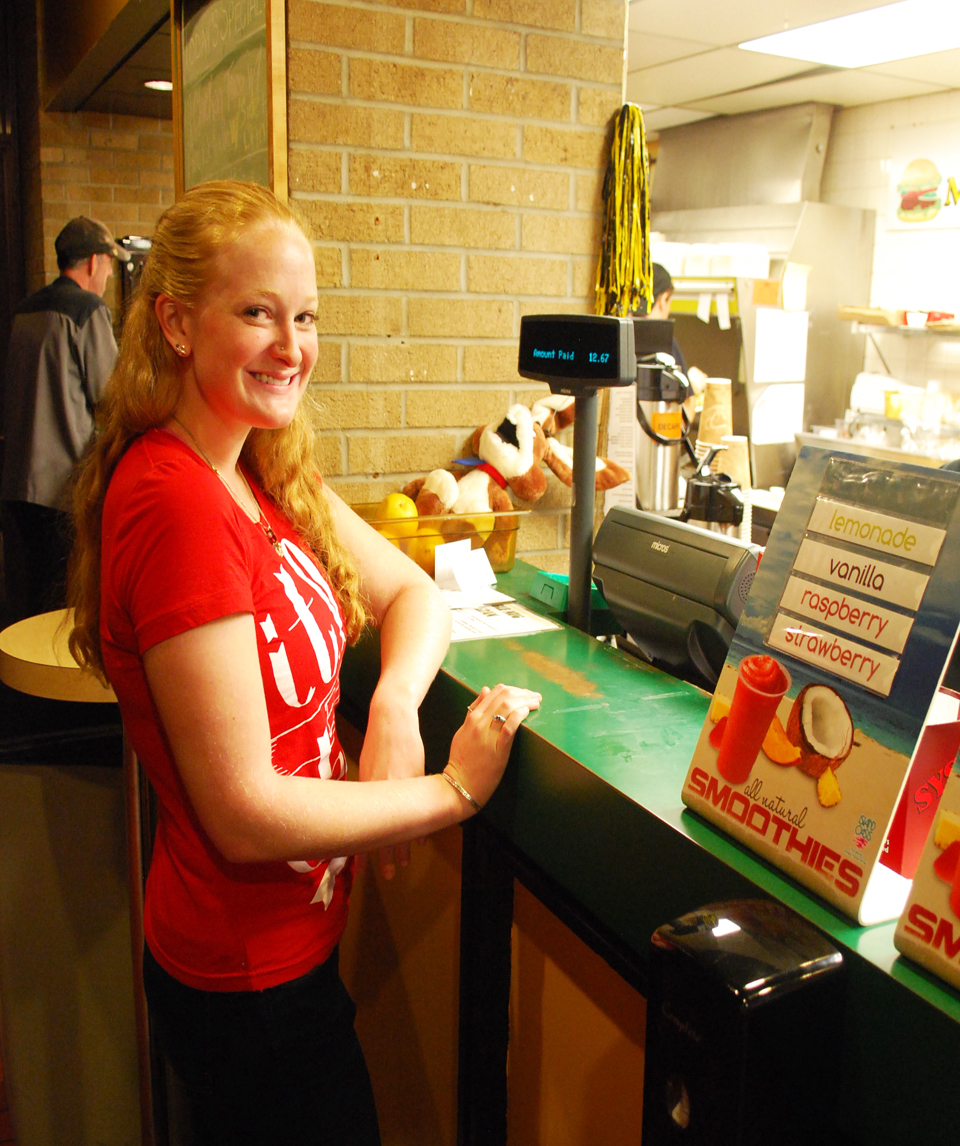Wyatt Smith
In 2010, Meghan Ingram ’14 embarked on a whirlwind Midwest college tour, hoping to transfer from her east coast university.
On the lookout for a smaller school, Ingram stopped by Wooster.
“There was something really special about Wooster when I drove through here that made me want to get out and actually go on a tour and talk to people,” Ingram said. “I just could tell when I got out of my car that it was a good place for me.”
Ingram, an English major with an education minor, spent her first year of college at The George Washington University in Washington, D.C. She was initially attracted to the urban setting and large student body, especially because it stood in stark contrast to her small private high school.
“My sister went to [GW],” Ingram added. “I think part of me wanted to go and prove to people that I was as smart as my sister.”
Although she enjoyed many of her experiences in Washington, D.C., Ingram soon felt out of place. She was unhappy with her class sizes, which often exceeded 200 students. She also realized that she wanted to pursue a degree in education, a program not offered to undergraduates at GW.
After her first year of college, Ingram took a leave of absence from GW. During the subsequent gap year, she spent seven months teaching at a school for the deaf in Fiji. Ingram’s involvement with the school cemented her interest in education and made transferring imperative. Ingram completed her transfer applications while on the Pacific islands.
A transfer application consists of the Common Application, a college transcript and a college official form, which indicates that the student is in good academic and social standing. There is also a supplemental essay asking why the undergraduate is specifically interested in transferring to Wooster.
Ingram’s story echoes those of other transfer students. Amy French ’14 and Gentry Kerwood ’15 also transferred to Wooster from large universities at the beginning of their sophomore years.
Both Kerwood and French cited Wooster’s relatively small student body as a key reason for transferring.
“We had 15,000 students on three acres of land,” said Kerwood, who spent his first year of college at Drexel University. “I felt like a squished sardine.”
French, who transferred from Syracuse University, expanded on this point. The large student population of her previous college interfered with her ability to develop relationships.
“It sounds crazy,” French admitted, “… but what I found was that I would meet people and never see them again. It was difficult to get involved and connect with other students and my professors.”
Like Ingram, French had trouble changing majors at her previous institution. Ingram was unable to obtain a teaching license as an undergraduate while French would have had to reapply to a different college within the university in order to switch from communications design to business.
All three transfer students commented on the discomfort inherent in being “the ‘noobie’ on campus,” as Kerwood put it.
“It was hard coming to a new place,” said French, “feeling like a freshman two years in a row.”
Ingram was able to move past her disappointment with her own orientation by joining this year’s Orientation Committee and working with the new transfer students. The role allowed her to change aspects of the transfer orientation that she was originally dissatisfied with.
Kerwood, French and Ingram were also unanimous in their love for Wooster.
“After spending a few weeks at Wooster I felt a sense of loss,” said Kerwood. “I’ve lost a year at this wonderful college [while at Drexel].”
“I can say with absolutely certainty,” French remarked, “… that [transferring to Wooster] was one of the best decisions of my life …. I think of Wooster now as my second home.”
“It doesn’t surprise me that the transfer students love Wooster,” said Assistant Director of Admissions Charles Laube, who works with transfer applicants. “The student that is going to uproot themselves from another institution is very deliberate in their choice of institutions that they will be attending.”
Ingram loves how Wooster’s courses are able to hold her attention. Like French and Kerwood, she was unable to think of any way in which Wooster did not live up to her expectations.
“I have remained excited about the community here and about all of my classes,” said Ingram. “Right now I’m doing junior I.S. and I’m so excited. I’m excited about so many things.”

